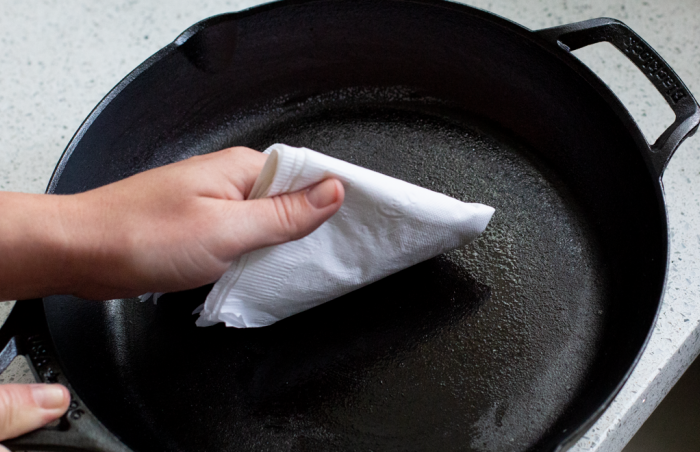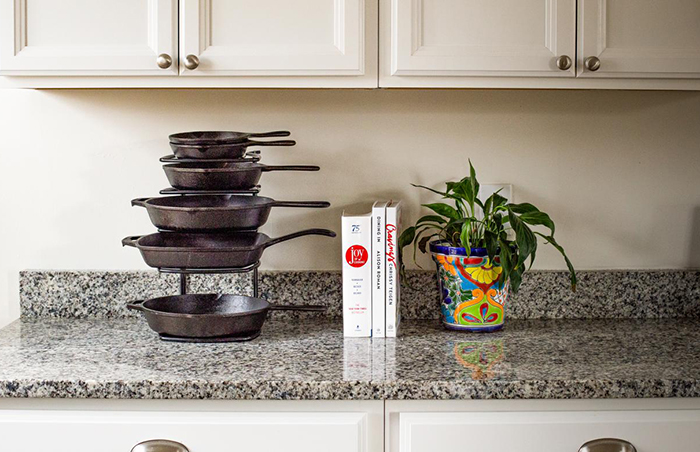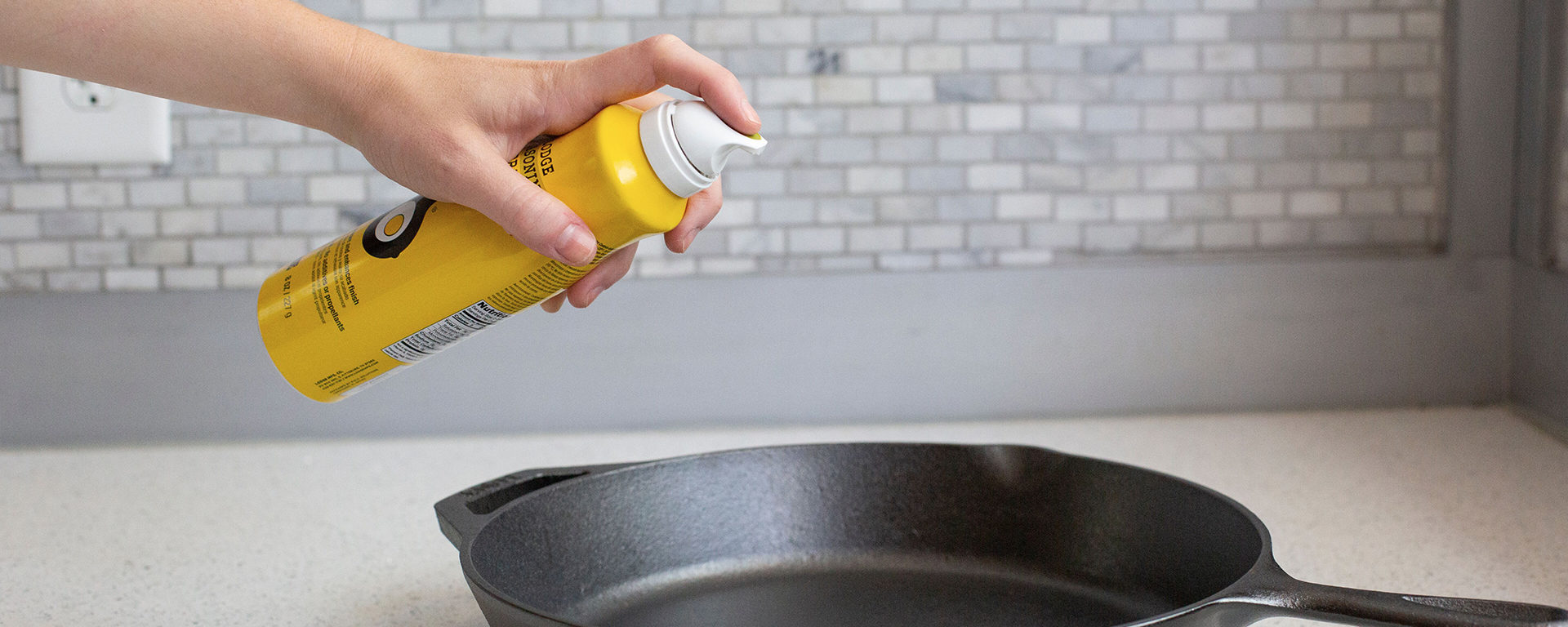Cooking with cast iron can seem a little daunting. There are all these rules to follow and it takes all this time and you don’t want to ruin it forever. Well, the truth is caring for cast iron isn’t much harder than caring for any other pot or pan. Yes, it takes time, but the amount of time you’re physically cleaning it isn’t any more time than you’d spend on anything else that’s got food stuck on it.
Upon getting your cast iron skillet, first and foremost, wash it before you use it. All you need is a little soap and water. The same as any cooking utensil, you want to make sure you get off any adhesive or factory residue so you’re not ingesting anything. Keep reading for more information on how to take care of your cast iron once you’ve used it.

Always wash your cast iron skillet by hand. This is important to the longevity and usability of your cast iron. Washing is easy and can be done in no time. Use a small amount of soap, yes soap, and warm water then gently scrape off any food that’s stuck. If there’s any food that’s REALLY stuck, just simmer a little water for a few minutes, then try again when it’s cooled. Once it’s cleaned, dry it quickly and thoroughly with a lint-free cloth or paper towels.
Dishwashers can cause your seasoning to come off, which makes your skillet susceptible to rust. If you do put your skillet in the dishwasher, it can still be fixed, so don’t fret! All you have to do is scrub the rust with steel wool, re-season the skillet (see below for more on seasoning), and it’s good as new.
For more detailed information on how to clean your cast iron, Lodge provides you with all the information you need here.

Speaking of seasoning… That’s the next step once your skillet is cleaned and dried. The term “seasoning” can sound a little scary and like a lot of work, but it’s actually very simple. Seasoning refers to oil baked onto cast iron. So to season your cast iron, simply spray your skillet with cooking oil (make sure the entire skillet is evenly covered), bake it in the oven at 450-500 degrees F for an hour, and it’s ready to go. This creates a natural non-stick surface and helps prevent rust.
Since seasoning is just oil that is baked on, whenever you cook certain foods layers of fat and oil will build-up. This is a very GOOD thing and means that your cast iron only gets better with age. Some cooking, however, can remove a bit of your seasoning, which is why it’s still good to do it after each use.
For more detailed information on how to season your cast iron, Lodge provides you with all the information you need here.
Storage

Storing your cast iron skillet is easy and really doesn’t require anything extra than what you’re probably already doing. The only rule for storing cast iron is to make sure it’s bone dry and stays bone dry! Any moisture can lead to rust, which quickly undoes all your hard seasoning work, and no one wants that to happen.
Bonus Feature
Busting Cast Iron Myths
Just as a little bonus for you: Lodge debunked common myths associated with cast iron skillets. Check it out here.
Electronic Express
We Make Cast Iron Care Happen
